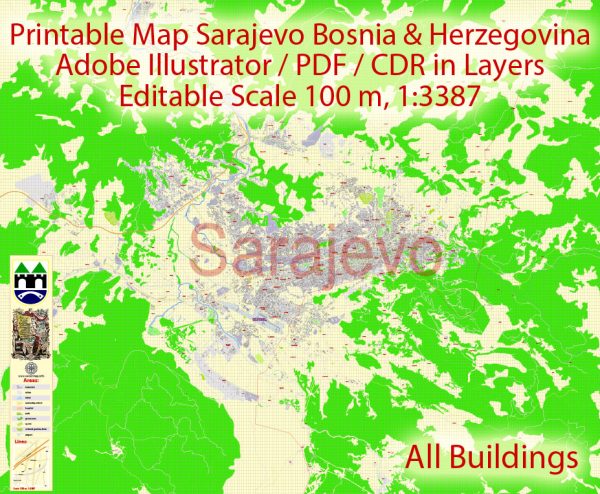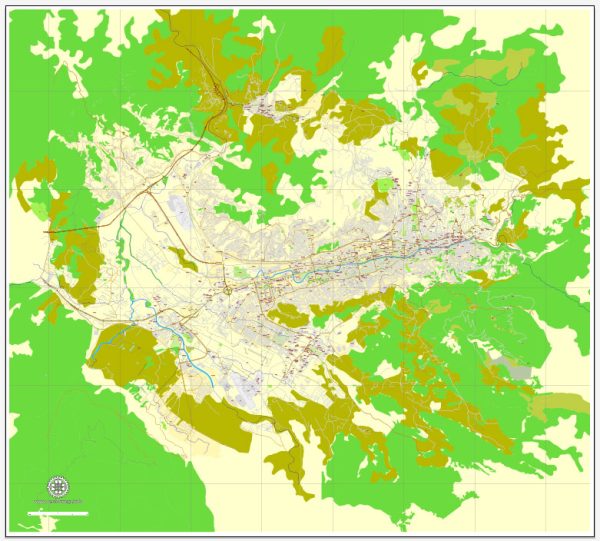A general overview of Sarajevo’s principal waterways, bridges, and main streets in Bosnia and Herzegovina. Vectormap.Net provide you with the most accurate and up-to-date vector maps in Adobe Illustrator, PDF and other formats, designed for editing and printing. Please read the vector map descriptions carefully.
Waterways: Sarajevo is situated in a valley surrounded by hills and mountains, and it doesn’t have major navigable rivers flowing through the city. The Miljacka River is the most notable waterway in Sarajevo, flowing through the city center. While not navigable, the river adds scenic beauty to the cityscape.
Bridges:
- Latin Bridge: Perhaps the most famous bridge in Sarajevo, the Latin Bridge spans the Miljacka River. It gained historical significance as the site where Archduke Franz Ferdinand of Austria was assassinated in 1914, an event that triggered World War I.
- Suada and Olga Bridge: Also known as the Festina Lente Bridge, it is a modern pedestrian bridge that spans the Miljacka River. It is recognizable for its unique looping design.
- Vrbanja Bridge: This bridge is another notable structure in Sarajevo. During the Siege of Sarajevo (1992-1996), it was known as “Sniper Alley” due to the high risk of sniper attacks on people crossing the bridge.
Main Streets:
- Marshal Tito Street (Titova ulica): A major thoroughfare in Sarajevo, named after Josip Broz Tito, the leader of Yugoslavia. It runs through the city center and is lined with shops, cafes, and historical buildings.
- Ferhadija Street: One of the oldest and most popular streets in Sarajevo, Ferhadija is a pedestrian zone featuring shops, restaurants, and historical architecture.
- Saraci Street: Connected to Ferhadija Street, Saraci is another lively street with various shops and cafes.
- Mula Mustafe Bašeskije Street: Known for its historic architecture, this street is named after the famous Ottoman poet Mula Mustafa Bašeskija.



 Author: Kirill Shrayber, Ph.D.
Author: Kirill Shrayber, Ph.D.